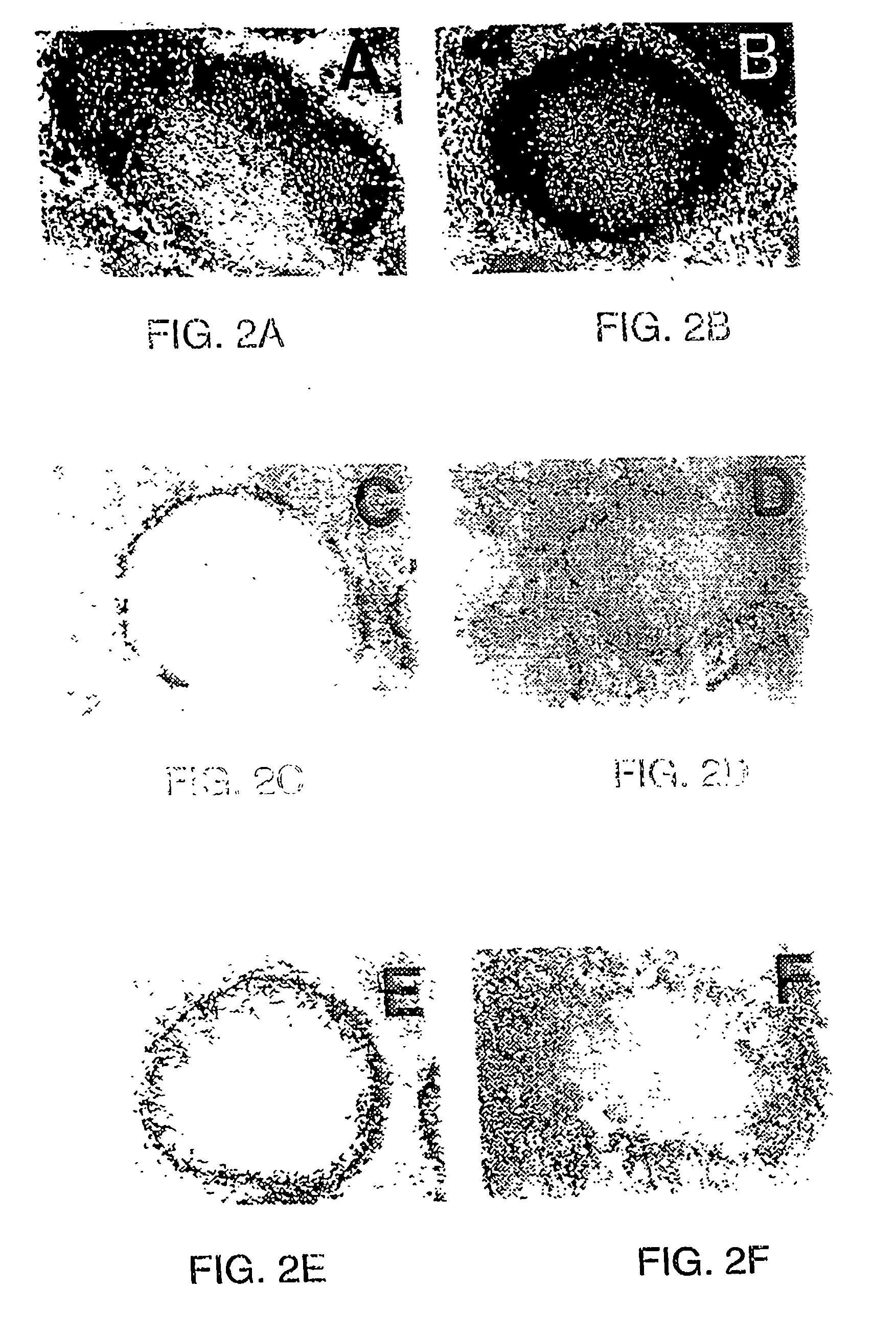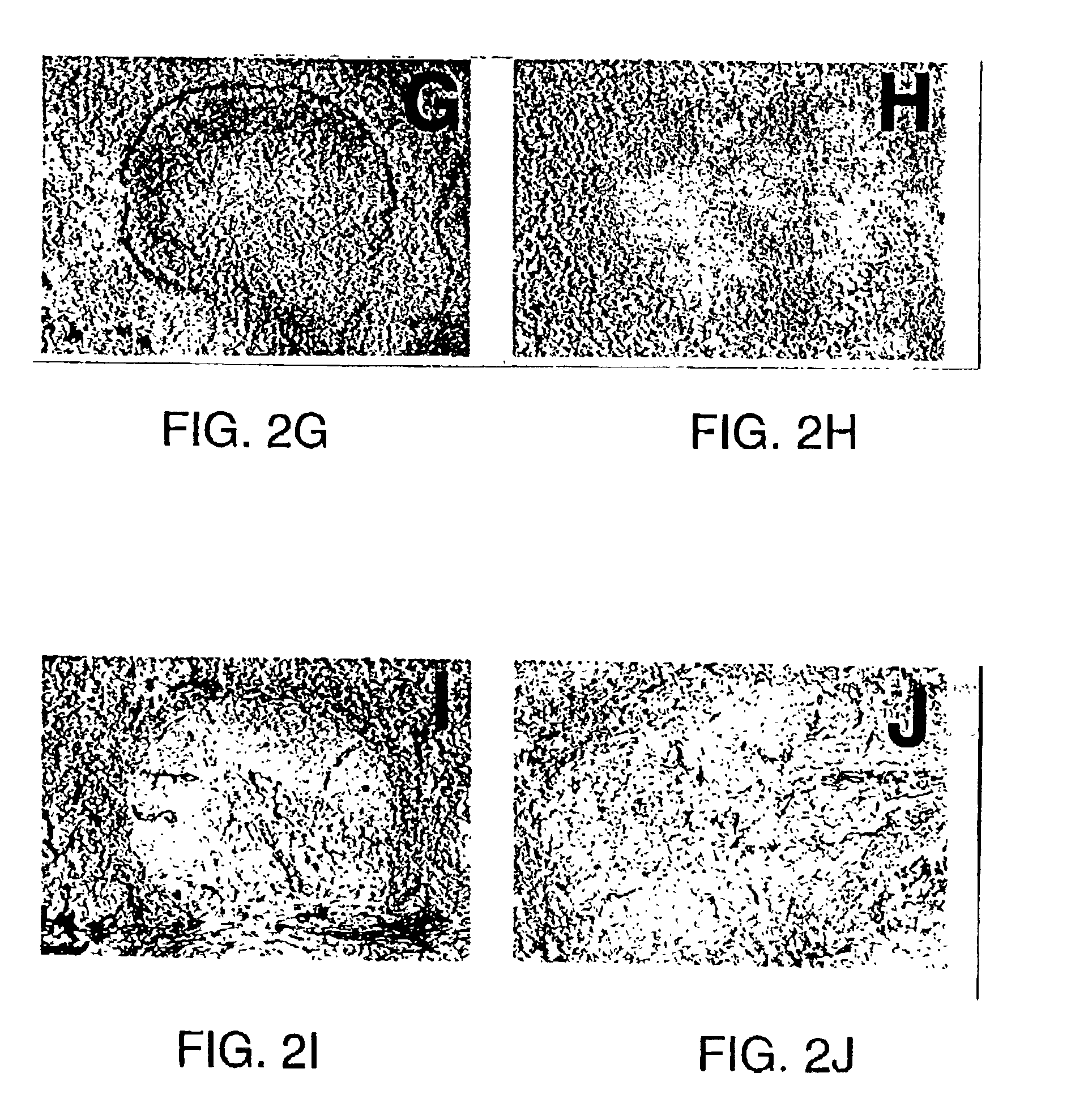Soluble lymphotoxin-beta receptors as therapeutic agents for the treatment of systemic lupus erythematosus
a technology of soluble lymphotoxin and beta receptor, which is applied in the direction of immunological disorders, drug compositions, peptides, etc., can solve the problems of unsuitable long-term therapies, unmet needs for additional agents and therapies, and adverse side effects, and achieve the effect of altering the structural organization of secondary lymphoid
- Summary
- Abstract
- Description
- Claims
- Application Information
AI Technical Summary
Benefits of technology
Problems solved by technology
Method used
Image
Examples
example 1
Preparation of Soluble Human LTβ Receptors as Immunoglobulin Fc Fusion Proteins
[0189]The sequence of a human cDNA clone isolated from a library of human 12p transcribed sequences derived from a somatic cell hybrid (Baens et al., Genomics, 16, pp. 214-18 (1993)), was entered into GenBank and was later identified as the sequence which encodes human LTβ-R. The sequence of this full-length human LTβ-R cDNA clone has been available since 1992 as GenBank entry L04270.
[0190]The extracellular domain of LTβ-R up to the transmembrane region (FIG. 1) was amplified by PCR from a cDNA clone using primers that incorporated NotI and SalI restriction enzyme sites on the 5′ and 3′ ends, respectively (Browning et al., J. Immunol., 154, pp. 33-46 (1995)). The amplified product was cut with NotI and SalI, purified and ligated into a NotI-linearized vector pMDR901 along with a SalI-NotI fragment encoding the Fc region of human IgG1. The resultant vector contained the dihydrofolate reductase gene and the...
example 2
Preparation of Soluble Murine LTβ Receptors as Immunoglobulin Fusion Proteins
[0192]A complete cDNA clone of the murine LTβ-R was prepared by ligating a 5′ NotI / ApaLI and 3′ ApaLI / NotI fragments from two partial cDNA isolates into the NotI site of pcDNA3 (InVitrogen, San Diego, Calif.). The sequence of this cDNA clone is accessible as GenBank entry U29173. No coding sequence differences were noted when compared with another sequence entry for murine LTβ-R found in GenBank entry L38423.
[0193]A soluble munne LTβ-R / human IgG1 fusion protein was prepared by PCR amplification of the full length mLTβ-R cDNA clone as a template and the primers 5′AACTGCAGCGGCCGCCATGCGCCTGCCC 3′ (SEQ D NO: 2) and 5′GACTTTGTCGACCATTGCTCCTGGCTCTGGGGG 3′ (SEQ ID NO: 3). The amplified product was purified and cut with NotI and SalI and ligated with a SalI / NotI human IgG1 Fc fragment into NotI-linearized and phosphatase-treated SAB 132 to form JLB 122. For stable expression, the NotI cassette containing the murine...
example 3
Immunohistochemical Analysis of Spleen Following Multiple Injections of Mice with LTβ-R-Ig
[0194]4-5 week old mice received six injections, one per week, of LTβ-R-Ig or LFA-3-Ig (100 μg ip), and were immunized with SRBC on the day of the sixth fusion protein injection. Mice then received an additional injection of LTβ-R-Ig or LFA-3-Ig on day 4 after challenge with SRBC. The animals were sacrificed on day 10 after challenge with SRBC and organs were harvested for analysis of structure. The left column of FIG. 2 represents spleen sections from animals treated with LFA-3-Ig (A, C, E, G, I) and the right column from animals treated with LTβ-R-Ig (B, D, F, H, J). Acetone-fixed frozen spleen sections were double stained with biotinylated anti-mouse B220 labeled and anti-mouse CD4 antibodies (A and B), followed by a corresponding second staining with alkaline phosphatase-labeled streptavidin (purple blue, dark staining) and horseradish peroxidase-labeled mouse anti-rat Ig with (light brown ...
PUM
| Property | Measurement | Unit |
|---|---|---|
| thick | aaaaa | aaaaa |
| resistance | aaaaa | aaaaa |
| adhesion | aaaaa | aaaaa |
Abstract
Description
Claims
Application Information
 Login to View More
Login to View More - R&D
- Intellectual Property
- Life Sciences
- Materials
- Tech Scout
- Unparalleled Data Quality
- Higher Quality Content
- 60% Fewer Hallucinations
Browse by: Latest US Patents, China's latest patents, Technical Efficacy Thesaurus, Application Domain, Technology Topic, Popular Technical Reports.
© 2025 PatSnap. All rights reserved.Legal|Privacy policy|Modern Slavery Act Transparency Statement|Sitemap|About US| Contact US: help@patsnap.com



